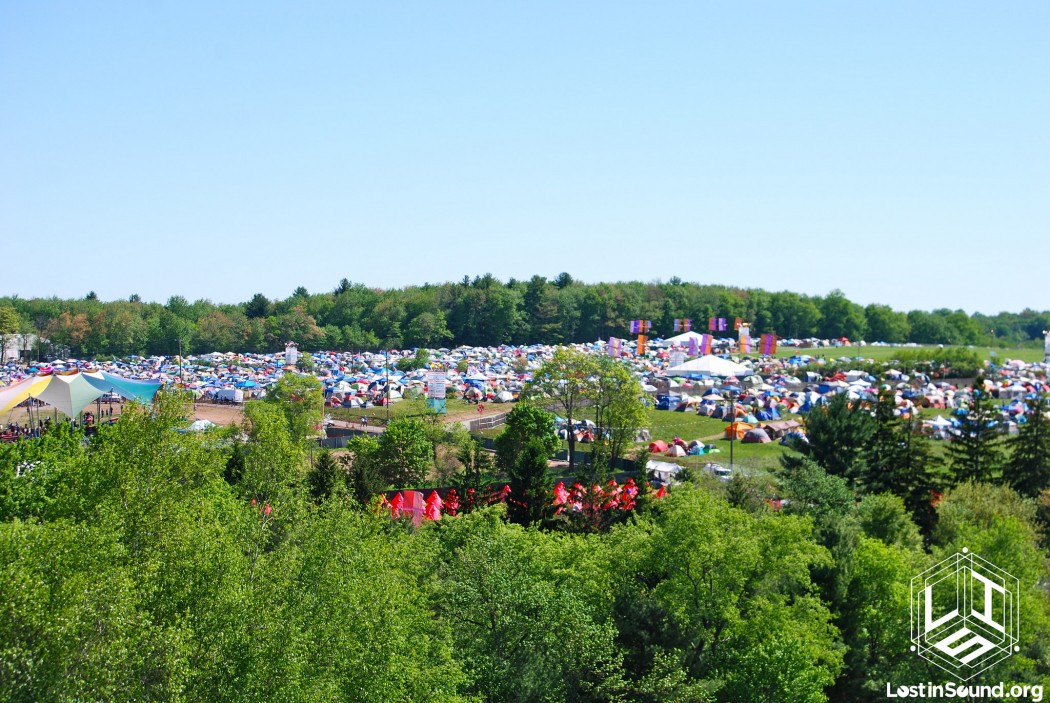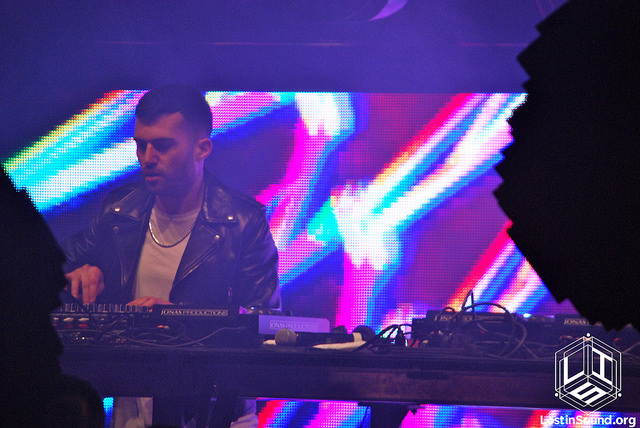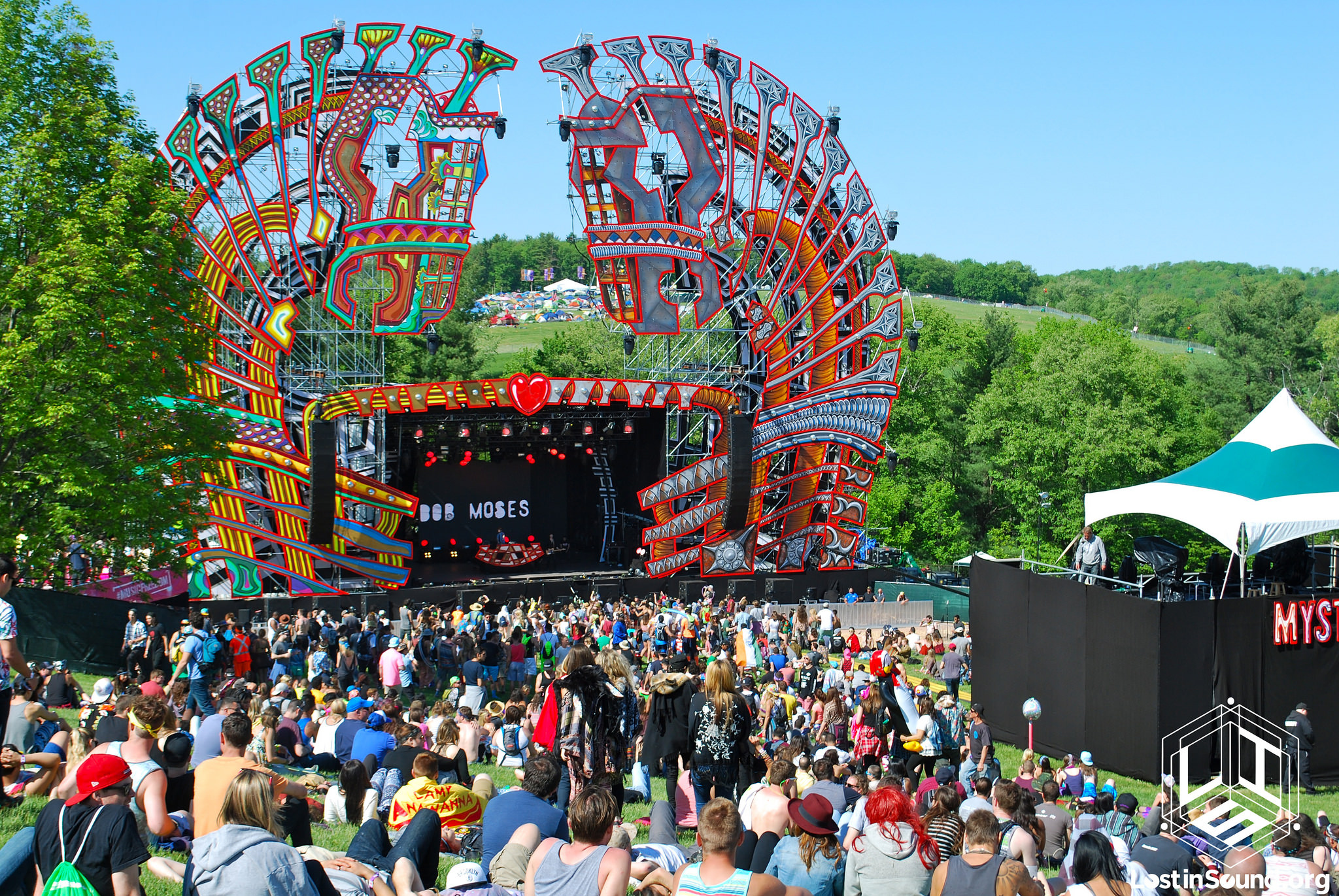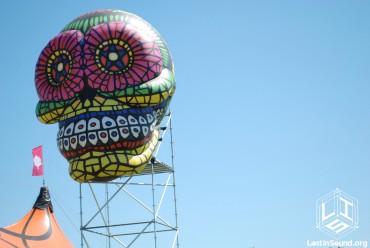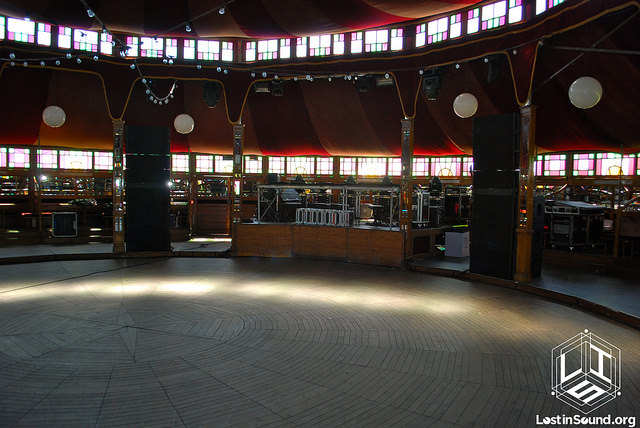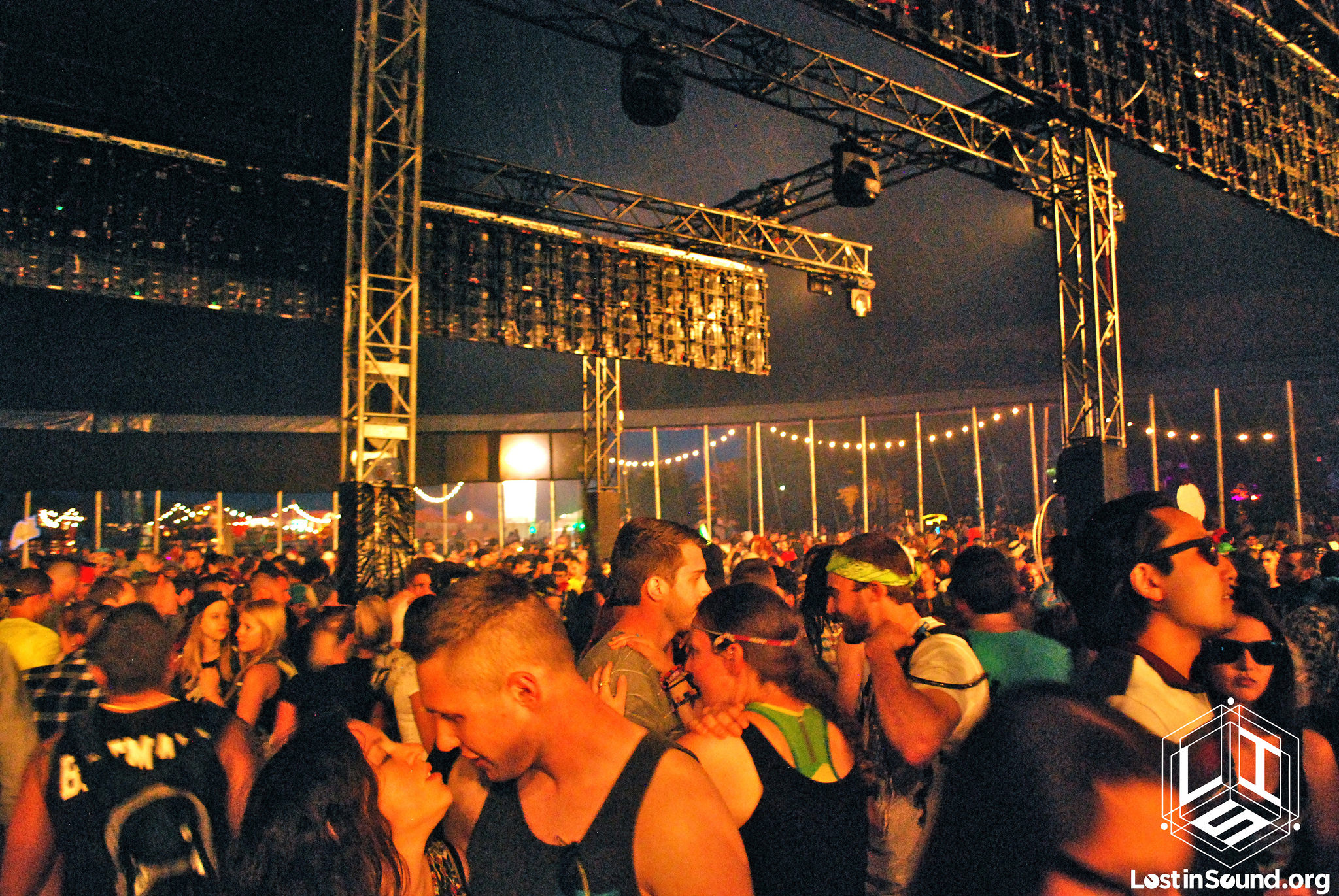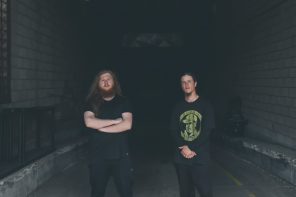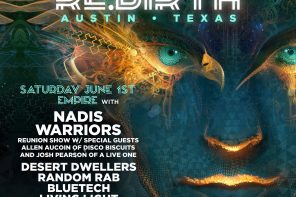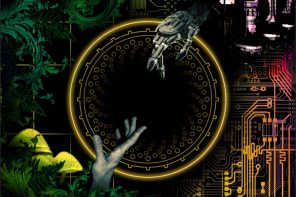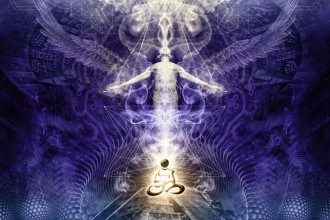Mysteryland has made a statement for American festival culture. On Memorial day weekend, the festival competed for the attention of the Northeast with EDC New York. While EDC adhered to its standard lineup of mainstream EDM, Mysteryland reached out to curators such as Verboten and Webster Hall to present a more underground cohort of musicians. Ostensibly, these sophisticated musicians would draw a proportionally sophisticated fan base, rather than the throngs of scantily clad guidos and their female counterparts who flock every year to EDC NY to eat their fair share of molly. The strategy worked. Despite its ultra-kitschy name, Mysteryland attracted a mature fanbase that was sincerely interested in the intricacies of its favorite musicians. Even after dropping gaudy, big-name acts such as Nervo and Steve Aoki from last year’s Mysteryland U.S.A. inaugural lineup, the festival’s attendance more than doubled. This year’s success is a reflection of a recent change in the cultural climate surrounding American EDM; the masses are growing tired of listening to the same big room house drops at every concert, and massive festivals and commercial artists such as Ultra and Avicii are being forced to reevaluate their image in order to stay relevant with American audiences.
The effects of this unprecedentedly mature Northeast festival audience were immediately apparent. Mysteryland’s hired security forwent a typical exhaustive and exhausting bag search upon entry to the camp grounds, in favor of a more relaxed interaction with campers. Unlike with overtly drug-infested festival crowds, Mysteryland’s experienced attendees could be trusted with their own decisions. This eliminated the paternalistic necessity to seize all drugs on entry to the festival in order to mitigate the weekend’s inevitable deaths and seizures. The tacitly casual arrangement with Mysteryland staff permeated the weekend; festival-goers did themselves the favor of staying safe, and therefore allowed staff security to avoid the role of a police force. Although perhaps it should be taken for granted, it was peculiarly refreshing to not constantly be on the watch for the impending seizure of drugs by security, as well as macabre, drug-induced seizures throughout the weekend.
Mysteryland officially began at Friday night’s opening party, open exclusively to the festival’s “Holy Ground” campers. I descended upon a tent of giddy New Yorkers, ecstatic in anticipation of a set by the festival’s first major headliner, A-Trak. A-Trak’s name is inexorably linked with a reputation of high-integrity DJing, given his extensive background before the recent EDM bubble. However, instead of exhibiting sophistication in his DJ set, A-Trak simply curated a party. His mixing came across with a sense of extraordinary ease, and he occasionally treated the audience with his unparalleled scratching abilities, but the tracks he spun were, above all else, poppy. This set initiated a trend for the opening party’s headlining DJ sets: each are recognized as the cutting edge of their respective genres, but their sets did not begin to equal the musical contributions of the days to come. I strayed away from the tent as A-Trak began spinning Big Sean’s I Don’t Fuck With You,” to the crowd’s half-assed delight.
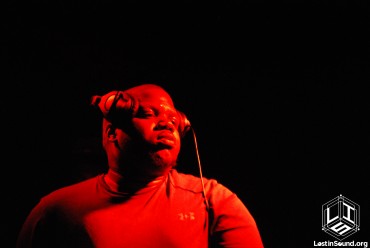
Photography by Chris Morris
From A-Trak’s set, I withdrew to The Boat, a stage that is typical of Mysteryland’s charmingly overblown, theatrical ethos. Intuitively, The Boat was a fantastical rendering of an old-fashioned sailing vessel, complete with an active smokestack and a deck, from which crowd members could view the stage’s performers from above. The Boat was home to the more bass-centric performances of the weekend, and at this particular moment was hosting Jersey club purveyor Nadus. Nadus provided a grittier version of A-Trak’s set, in which pop tunes were traded for quirky quotations from phenomenological insertions such as Bill Nye The Science Guy theme, and big room house was replaced with down to the floor Jersey club rhythms.
Soon after was the opening party’s main attraction: a set by techno god Richie Hawtin. Hawtin utilized the nighttime ambience by turning off the stage’s lighting, other than a few monochromatic stage lights that sporadically swept over the crowd. The combination of the subdued lighting, Hawtin’s characteristic black clothing, his sassy side-flipped hairstyle, and his uninspired facial expression exuded an air of deliberate pretension. The music was starkly minimalist, perhaps even by Hawtin’s standards, and in an insidiously un-kitschy style abstained from any sort of groove or melody in favor of alternations of clicking percussion and physically uncomfortable, pulsating bass. Of the weekend’s diverse techno lineup, Hawtin stands out as a musical ascetic, and even left this crowd of techno heads confused and uncomfortable. In order to maintain some inward semblance of journalistic integrity, I forced myself to stay at the stage to appreciate one of Hawtin’s internationally lauded live sets, but the effort was futile. I quickly returned to my tent for the night with a bad taste in my mouth and an incipient case of tinnitus.
When I awoke, the festival had truly begun, and I began to appreciate Mysteryland in all its grandiosity. In the daylight, components of the festival which had previously seemed insignificant now leapt forward with profound charm. Adjacent to the camp ground was an area designed by Brooklyn based BangOn!, which displayed fire breathing performances, tastefully off-kilter DJ sets, and a fantastical stage area dominated by two appropriated school buses, perhaps in a quirky homage to the not-so-dissimilar Merry Pranksters. In a corner of the festival grounds, a red carpet led up to a velvet rope and a tiny room, which an enormous, teutonic bouncer explained was “the smallest club in the world,” in which a single person can wait in line for a live DJ performance. Next to the smallest club was the True Mirror Palace, at which inquisitive festival-goers could view themselves in mirrors “correctly,” without switching the left and right sides of their face, as with normal mirrors. Throughout the grounds there were gourmet food stands, curated by the beloved Brooklyn-based Smorgasburg food fair. Lucky attendees caught a glimpse of a delightfully bizarre motor vehicle adorned as a dinosaur passing through the festival at odd intervals, with a ruggedly dressed man DJing techno music from the back. A myriad of additional attractions and quirks brought the festival’s ethos alive.
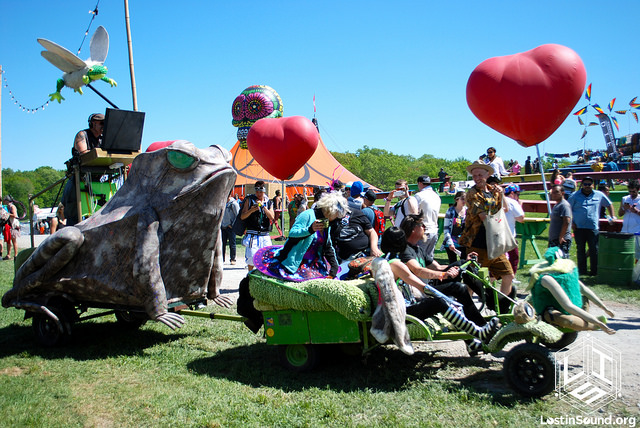
Photography by Chris Morris
The first prominent musical prominent on Saturday morning was Space Jesus, another contributive entity from Brooklyn, who is almost as much a public image as a musician. His set of unconventional bass music, paired with an unparalleled stage presence and look, drew a crowd that quickly grew from his small, but very devoted, following, to a massive group of intrigued listeners. By the end of his time slot, Space Jesus had (rightfully) amassed an audience that dwarfed the attendance at Richie Hawtin’s tent the night before, and ostensibly won himself a few new devotees.
From The Boat, I went to admire the main stage. In a deliberate microcosm of the festival’s spirit, the main stage was designed as a pair of enormous, beautifully multi-colored horses. Underneath the horses’ craning necks, Bob Moses captivated a seated audience with their dreamy style of house music, accompanied by live vocals and guitar. From here, Goldfish grabbed hold of the main stage audience with their more energetic take on the combination of live instruments and deep house, warming up the crowd with an impressive collaboration of talent between electronic and acoustic musicians. Fans swooned at the set’s exiting soprano sax solo, and energy continued to rise as the daylight hours at the main stage began to wane.
Afterwards, I made my way to enjoy the praiseworthy DJ work of Minnesota at The Boat. The previous hours of frenzied dancing, along with the steady flow of drinks from the open bar at the artists’ lounge (cheers to Mysteryland for keeping the press happy and allowing me to personally put you down for hundreds of dollars in bloody marys and Heinekens) set up Minnesota’s otherwise enjoyable dubstep to be inundating rather than invigorating. I relaxed in the grass enjoying Smorgasburg’s Belgian style frites with distracting, wobbling bass in the foreground.
Bogged down both mentally and physically, I tiredly meandered back to the main stage to endure Madeon’s long awaited set. Within half a minute of Madeon’s entry, my beer-and-food-invoked delirium disappeared into a state of elated incredulity at the music coming from this small, French man. Ever-known as a perfectionist, Madeon spun a set that could have easily taken as long to craft as lazier producers spend on entire EPs. It is easy to tell that Madeon was not playing a typical, commercial festival set. Within ten minutes he had already shifted from electro, to trap, to future house in a formidable display of power-mixing. By the fifteen minute mark, he dropped Rustie’s “Slasher,” a tune that many DJs reserve for their encores, but incredibly Madeon’s set only continued to build from there. For the next hour he bombarded his audience with drop after drop of constantly changing genres, along with the occasionally tactical, recognizable snippet to maintain the interest of the less progressive crowd members. The set culminated in a whirl of original productions, a remix of “All of the Lights,” and filthy dubstep that threw the crowd into a roar. They had just witnessed something decidedly special.
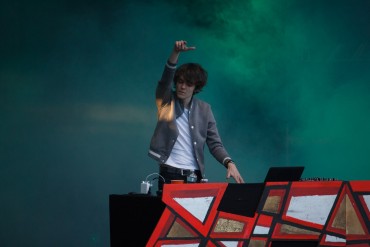 In a bittersweet contemplation, I thought to myself that Madeon must have already stolen the spot for the best set of the weekend. I made my way back to the Boat once more (I spent most of my time between The Main Stage and The Boat, due to my barely-budding interest in the festival’s techno lineup) for a DJ set by Beats Antique. Although Beats Antique did not exhibit the full majesty of their live show at Mysteryland, I enjoyed their unique, Eastern European-influenced sounds as I quietly lay in wait for a back to back set from Gramatik and Griz. As anticipated, the two funk purveyors came out together at the beginning of Gramatik’s set to spin their own tunes, along with their hugely funky, collaborative ‘Grizmatik‘ tracks. The crowd went even wilder than they did for Madeon (although this increased energy per capita could be attributed to the more demure Mysteryland attendeess leaving to hear what I can assume was a wildly original show by EDM’s sweetheart, Kygo, at the main stage). Even once Griz exited the stage, it was visible that Gramatik’s already-impressive live show has been steadily improving over the past years. To improve his live presence, Gramatik finally deviated from his obsessive practice of playing only self-produced tunes. Even more significantly, he has employed the help of multi-instrumentalist Russ Liquid to improvise a formidable combination of saxophone, trumpet and keys solos over the set. Along with contributions from Gibbz, the guitarist/vocalist and Gramatik’s newly appointed tour manager, the show erupted into a full blown party. I left the stage with a fully-endogenous feelings of ecstasy, as I went to hear the night’s closer, the renowned Worlds live set by Porter Robinson.
In a bittersweet contemplation, I thought to myself that Madeon must have already stolen the spot for the best set of the weekend. I made my way back to the Boat once more (I spent most of my time between The Main Stage and The Boat, due to my barely-budding interest in the festival’s techno lineup) for a DJ set by Beats Antique. Although Beats Antique did not exhibit the full majesty of their live show at Mysteryland, I enjoyed their unique, Eastern European-influenced sounds as I quietly lay in wait for a back to back set from Gramatik and Griz. As anticipated, the two funk purveyors came out together at the beginning of Gramatik’s set to spin their own tunes, along with their hugely funky, collaborative ‘Grizmatik‘ tracks. The crowd went even wilder than they did for Madeon (although this increased energy per capita could be attributed to the more demure Mysteryland attendeess leaving to hear what I can assume was a wildly original show by EDM’s sweetheart, Kygo, at the main stage). Even once Griz exited the stage, it was visible that Gramatik’s already-impressive live show has been steadily improving over the past years. To improve his live presence, Gramatik finally deviated from his obsessive practice of playing only self-produced tunes. Even more significantly, he has employed the help of multi-instrumentalist Russ Liquid to improvise a formidable combination of saxophone, trumpet and keys solos over the set. Along with contributions from Gibbz, the guitarist/vocalist and Gramatik’s newly appointed tour manager, the show erupted into a full blown party. I left the stage with a fully-endogenous feelings of ecstasy, as I went to hear the night’s closer, the renowned Worlds live set by Porter Robinson.
For those of you who are unfamiliar, Porter Robinson is no longer a stalwart member of the EDM movement. He has branched off from his young, poppy output, and has created a live show that is a serious work of art. Based on his magnum opus, the Worlds album, his live show follows a loose story line of a video game character which tragically ends in the main character’s death. While this may sound like an impossibly childlike attempt at veritable art, the result is beautifully heart-wrenching. The set cycled through myriad original productions which ranged in influence from synth pop to glitch hop, and ultimately ended with a significant portion of the audience in tears. With the conclusion of Porter’s show, fireworks erupted over the audience, and the first day of Mysteryland had concluded.
Although the second full day of music did not bring comparably weighty sets to those by Madeon, Gramatik and Porter Robinson, the second part of the festival did not leave anything to be desired. In a well-needed relinquishment of my techno-aversion, I spent some time at the Verboten tent to hear an eclectically influenced set by Brooklyn’s Ashwin Khosa. Almost as surprisingly interesting as Khosa’s set was the Verboten tent, a thorough imitation of a 19th century saloon. The tent was set up with a central focus on the center of the dance floor, with booths along the outer edges, and only a minimal visual attention to the performing DJ.
For much of the rest of the day, I spent my time listening to an expertly curated lineup at the Webster Hall tent. Sweater Beats played a solid stream of future bass which lead into a extraordinary future house set by Anna Lunoe. Lunoe captivated the crowd with a perfect combination of house and bass music, along with her infatuating, comfortable showmanship. Later, the surprisingly young British duo Bondax spun their own future house show at the same stage, to a satisfactory, but less captivating effect than Anna Lunoe’s previous show-stealing set.
By this point in the night, masses began gravitating towards the main stage for consecutive parties curated by Dillon Francis and Diplo. As expected, Dillon Francis spun an energy-packed show which wooed the audience, but lost some of the characteristic charm of his moombahton-heavy shows from previous years. Francis’s music ended early to make way for a set by EDM’s exemplar, Diplo.
In the first moments of Diplo’s control of the crowd, a mildly drug-addled, but curiously insightful friend yelled to me “Diplo owns EDM!” These words rang true with me, as I realized that Diplo was in many ways responsible for the vast majority of the music in his set, as well as many components of the genre’s propulsion. Despite his recently divisive reputation, Diplo has skillfully crafted a road to ubiquity for himself with his successful Mad Decent imprint, his collaborative efforts with some of the most trendy pop artists, his involvement in Jack Ü, and his sensational online presence. Since his days as the hipster producer behind his inaugural album, Florida, Diplo has digressed to a status as a supreme curator of parties. There was little arguing against Diplo’s prowess as a DJ as he spun a set that was simultaneously hard-hitting, accessibly poppy, and tactfully sophisticated in its mixing. By the end of his time on stage, Diplo made the humbling announcement that this was his first time headlining at night at an American music festival. Upon hearing this the crowd cheered, and the main stage erupted into another display of fireworks to end the weekend’s party.
As campers walked back to the Holy Ground there was a tangible sense of pride in the air. Mobs of people cheered and applauded the festival staff as they passed by. As a community, Mysteryland’s staff and attendees realized they had accomplished something unique: for one of the first times in the Northeast United States, a large, commercial festival happened the right way.

